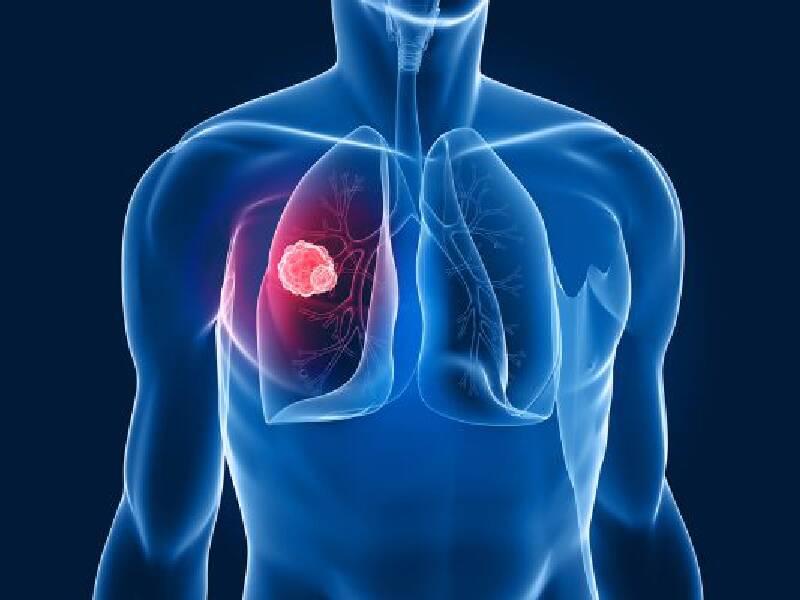They are malignant tumors originating from the respiratory tract. It is more common in men than women and is the most common type of cancer that causes death in both genders. Today, it is the most common cause of death after cardiovascular diseases.

Lung Cancer
Malignant tumors originating from the respiratory tract. It is more common in men than women and is the most common cause of death from cancer in both sexes, following cardiovascular diseases in today’s world.
Causes and Risk Factors of Lung Cancer:
- Smoking
One of the most important characteristics of lung cancer is that it is the only preventable cancer type due to its association with smoking. Lung cancer is directly related to smoking. There are 3000 different chemicals and more than 40 carcinogens in cigarette smoke. The risk varies depending on the duration of smoking, the total number of cigarettes smoked, the age of initiation, and the type of cigarettes smoked.
- Secondhand smoke exposure
It carries the same risk as active smokers. The risk of lung cancer in women whose spouses smoke is 1.2-2 times higher than in other women. The same risk is valid for children.
- Exposure to asbestos
- Exposure to radon gas
- Air pollution
- Diet
- A diet poor in vegetables and fruits but rich in fat and alcohol.
- Lung Diseases
- Genetic factors
- Exposure to other chemical agents
Arsenic, vinyl chloride, nickel, chloromethyl ether, and mustard gas
The most important factor in the development of lung cancer is tobacco use. In addition, exposure to asbestos and air pollution should not be forgotten. Having lung cancer in the family increases the risk of developing lung cancer.
Symptoms of Lung Cancer:
- Intense and persistent cough
- Chest, shoulder, and back pain
- Blood in phlegm
- Hoarseness
- Shortness of breath
- Unexplained fever
- Recurrent pneumonia and bronchitis attacks
- Fatigue
- Loss of appetite
- Head and bone pain
- Unexplained weight loss
Early diagnosis is crucial in lung cancer. Early diagnosis increases the patient’s chances of survival. In developed countries today, the 5-year survival rate for patients diagnosed with lung cancer is around 15-18%. As lung cancer is detected early (Stage I), this rate increases to 80-85%.
To achieve early diagnosis of lung cancer before it progresses to advanced stages, methods such as direct lung X-rays, searching for tumor cells in phlegm, and bronchoscopy, which examines the respiratory tract with a fiber-optic tube with a light at the end, are used, especially in high-risk individuals.
According to official figures in our country, 20,000-25,000 new lung cancer patients emerge every year, and this number is thought to reach 30,000-40,000.
The disease may not cause significant complaints until it reaches advanced stages. This insidious nature is the most crucial factor that makes lung cancer so dangerous. Symptoms and signs of lung cancer include: a persistent and progressively worsening cough, blood in phlegm, shortness of breath, chest pain, frequent and persistent pneumonia or bronchitis, wheezing, loss of appetite, and weight loss.
For the early diagnosis of lung cancer, our center has modern diagnostic facilities. The lung screening test with multidetector CT is performed much more detailed and with much less radiation dose than other devices. Detecting nodules at smaller sizes that carry the risk of cancer allows for the possibility of necessary surgical treatment. After the diagnosis, the most appropriate treatment scheme is applied to patients.
There are three main treatment methods for lung cancer:
Surgery: A treatment method that can provide a disease-free life in the early stages.
Radiotherapy: It can be used before surgery and involves destroying tumor cells with special X-rays.
Chemotherapy: Treatment with drugs that kill cancer cells.
How can lung cancer be prevented?
In 90% of patients, smoking is the cause of lung cancer. Therefore, the simplest but most crucial step is not to smoke or to quit immediately if you are a smoker. Avoid smoking in enclosed spaces. It is known that one-third of patients who have never smoked but developed lung cancer were passive smokers. If your job requires working with chemicals and gases, do not neglect to have your lung X-ray taken at regular intervals.

